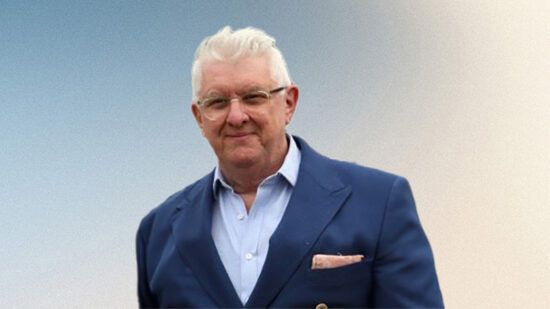This article was originally published Feb. 15, 2020 and has been updated to reflect new developments in the ESG industry.
After being celebrated for apparently trying to set the tone among financial services companies in embracing a corporate ESG mindset, BlackRock is realizing the flipside of being the center of attention.
Recent reports show the world’s largest asset manager, at more than $7.8 trillion, is comfortable holding at least $85 billion worth of coal investments. This goes against the grain of last year’s statement by BlackRock chief executive Larry Fink that the company planned to divest from producers of fossil fuels.
With the investing public is expressing a seemingly insatiable desire to put their money behind various forms of environmental, social and corporate governance causes, it’s not surprising that the asset management industry is virtually falling over itself to launch products and strategies boasting various forms of ESG and sustainable-investing labels. The trouble is, aside from recognizing the growing appeal of all things ESG, it turns out that investors, financial advisers and asset managers are often working from different playbooks when it comes to defining the space.
[More: Advisers should look for opportunities to connect with clients around their values]
Consider, for example, the SPDR S&P 500 Fossil Fuel Reserve-Free ETF (SPYX), which launched in 2016 without “Reserve” in the name but quickly added it following criticism from investors that the fund wasn’t ESG-pure enough.
By adding the word “Reserve,” State Street Global Advisors isn’t saying the index fund is necessarily free of fossil-fuel companies, but that it is free of fossil-fuel companies represented by the so-called Carbon Tracker 200, which tracks companies with the largest fossil-fuel reserves.
The distinction is no small thing to ESG purists like Andrew Behar, chief executive of As You Sow, a nonprofit shareholder advocacy organization that screens and grades funds based on a variety of ESG criteria, including the overall carbon footprint of the underlying holdings.
“It’s a problem because people invest based on the name of a fund, then it underperforms because it includes fossil fuels,” Mr. Behar said. “It’s also a problem for the real fossil fuel-free funds out there that are doing it right.”
In ESG parlance, the practice of making a fund appear purer than it actually is, whether intentional or not, is often referred to as “greenwashing.” And like ESG investing itself, greenwashing is nuanced and sometimes resides in the eye of the beholder.
[More: What is greenwashing?]
“Ultimately, ESG investing is an extremely personal investment decision,” said Matthew Bartolini, head of America’s research for State Street Corp.’s exchange-traded-fund business.
“Seeing the proliferation of ESG products, they often have similar names and objectives, but definitions vary across providers,” he added. “If we wanted a fund with no companies interacting with fossil fuels, it would be a very concentrated portfolio appealing to a very narrow set of people who may not even invest in it, because a selection of 20 stocks with no connection to fossil fuels could be potentially very volatile.”
[More: Advisers welcome potential regulatory scrutiny of ESG investing]
The Vanguard Group found itself in a similar pickle when it was learned its suite of four ESG-labeled funds included exposure to some fossil fuel, tobacco and weapons companies.
“They’ve been caught holding gun stocks, alcohol, and a lot of things on human rights watch lists,” said Max Mintz, junior partner and financial adviser at Common Interest, an advisory firm. “The problem is everyone is using the same language and without digging through prospectuses and talking to managers and getting access to the data, so it is difficult to know what you own. The greenwashing problem is definitely growing.”
Like State Street, Vanguard takes the position that ESG is subjective, and when creating diversified products to appeal to a broad market, there needs to be some flexibility.
“I think the ESG nomenclature is very analogous to how we think about what constitutes value or growth; there are lots of ways to categorize value and growth,” said Rich Powers, head of Vanguard’s ETF product management.
“As we thought about what we’re bringing to the marketplace we wanted it to reflect what we’re hearing from advisers,” he added. “When it comes to the consistency of ESG data and availability, there are gaping holes. We’re not trying to be all things to all people with this suite of funds. And if you have a different view, there are other products out there from different firms.”
[More: Transparency helps combat greenwashing]
GREEN GROWTH
The reason some investors and financial advisers believe the practice of greenwashing is growing and getting out of hand ties into the growing appeal of ESG investing.
In 2019, 300 mutual funds and exchange-traded funds categorized by Morningstar as sustainable attracted $20.6 billion in net flows, which is nearly four times the $5.5 billion in net flows the category saw in 2018.
[More: How to spot greenwashing]
One recent high-profile example of the asset management industry stepping up to acknowledge and address the rising demand for ESG products and strategies is the January announcement by BlackRock CEO Larry Fink that the world’s largest asset manager will be altering its investment policy to focus on climate change and other ESG factors.
FILLING THE GAPS
The news has drawn both praise for the general effort and criticism for all the potential gaps the asset manager is leaving unfilled on the ESG front.
[More: What’s the biggest risk for ESG investing? Ignoring it]
“I like seeing BlackRock enter the space in such a way, because in 10 years [ESG] won’t be a label anymore, it will just become industry best practices,” said Martin Jarzebowski, director of responsible investing at Federated Investors.
Mr. Jarzebowski, representing a firm that also makes ESG investing a priority, acknowledges the challenges for investors when it comes to matching ESG strategies with objectives.
“When you think about greenwashing and how to start rationalizing it, it’s an issue of whether actions speak louder than words,” he said. “The labels can simply be cosmetic.”
Mr. Mintz of Common Interest is more in the strictly critical camp when it comes to a company with the size and swagger of BlackRock putting its stamp on the ESG space.
“When the big players start rebranding things as sustainable, that’s when you have a problem, because ESG investing has become the most recent fad that the asset management industry is running on,” he said. “I still have a couple issues with BlackRock around proxy voting when they either don’t vote or are voting with management.”
Victor Orozco, a partner at Bair Financial Planning, also questions the motives behind any large asset manager that suddenly finds religion in the ESG space.
“BlackRock, in doubling their solutions, they might have the most ESG funds out there, but they still have so much in non-ESG funds,” he said. “It’s hard to be sure if they’re being truly genuine and intentional, or are they just trying to do a money grab?”
From BlackRock’s perspective, according to the two long and detailed letters written to both corporate executives and shareholders in January, BlackRock acknowledges supporting 12% of 40 shareholder proposals, as well as voting against almost 5,000 corporate directors last year.
“Where we feel companies and boards are not producing effective sustainability disclosures or implementing frameworks for managing these issues, we will hold board members accountable,” the letter to CEOs states.
BlackRock also does not apologize for offering non-ESG funds for investors who might not be interested in ESG strategies or causes. But BlackRock does confirm the need for greater consistency and standards regarding ESG nomenclature.
“We want to make sustainable investing more accessible to all investors and lower the hurdles for those who want to act. We have advocated for clear and consistent naming conventions for ESG products across the industry, so that investors can make informed decisions when they invest in a sustainably labeled fund,” the shareholder letter states.
With such vague parameters and definitions in overall ESG space, it is sometimes difficult to distinguish between intentional misperception and a more honest mistake.
“It is still a fairly subjective concept because the way a manager defines his ESG approach is going to be unique,” said Mamadou Sarr, head of sustainable investing at Northern Trust Asset Management. “The definition of ESG is broad in nature and it leaves room for interpretation.”
The labeling challenge and confusion typically go all the way down to the individual portfolio holdings. Last year, for example, the bond market saw $230 billion worth of bond issuance labeled as green. Of that total, $190 billion worth of those bonds followed the climate bond initiative that was established to address the greenwashing issue in fixed income.
But more extensive auditing found that only $41 billion worth of the green bonds issued were certified as green.
“It varies by issuance, but if you’re in a dirty industry and issuing a green bond, it is a question of whether you are you assessing it independently from the sector,” Mr. Sarr said.
As an impact investing consultant, Sonya Dreizler recognizes the confusion related to all the various ways of describing ESG investing.
“I do think there are new ESG and sustainable labels coming to market each year,” she said. “But greenwashing is not a term I usually use because it’s a vocabulary issue. ESG is data on a company and how each fund or manager uses that data varies significantly from manager to manager.”
COMMON LANGUAGE
But even as people like Ms. Dreizler can envision a time when ESG data is viewed as just data that is incorporated alongside all the other data used to analyze investments, she believes the industry needs to agree on some common language and definitions.
“From what I’ve seen, most funds use the ESG terminology in a nuanced way, but we all view it as the same,” she said. “There are movements to formalize language, but that’s still pretty nascent.”
[More: Why it’s time to believe the hype behind ESG investing]
Absent strict standards for what qualifies as an ESG investment, the space has become more reliant on research firms and data providers like Morningstar, MSCI and As You Sow, all of which offer portfolio-level analysis of ESG criteria.
In the Morningstar system, for example, a fund with a rating of four or five out of a possible five globes is deemed as being managed in a sustainable manner.
“It’s not a be-all, end-all, but if you’re looking at an intentional fund with ESG at its core, that fund should get four or five globes,” said Jon Hale, Morningstar’s global head of sustainability research.
“The ESG-labeled funds that don’t get four or five globes suggests they’re not living up to their name,” he added. “When I look at ESG funds in scoring average or lower globe ratings, I could see someone saying these are certainly not as comprehensive on sustainability as they hold themselves out to be. But that means you need to ask more questions about what they’re doing.”
A MARKET SOLUTION
While gaps remain in the reporting and gathering of ESG data — which is not helped by the generally subjective nature of sustainable investing — some believe the resolution will come via market forces that essentially fold ESG factors into all the other data used to analyze investments.
“We feel there is a convergence of societal, regulatory and investor demands that make ESG a topic that has to be central in the investing process, and some people are already doing that,” said Remy Briand, head of ESG at MSCI.
In some ways, the market is already doing that, as illustrated by Morningstar’s globe ratings, which occasionally uncover funds that are not even being marketed as ESG but merit high globe ratings. These funds just happen to recognize, and manage for, certain ESG risk factors, such as potential liabilities associated with certain industries or business practices.
[More: ESG & Impact Forum Film Festival 2019]
“We’ve seen hundreds of funds in the U.S. in the last year or two from mostly traditional asset managers who claim they are integrating ESG as a consideration, but not making it a primary focus,” Mr. Hale said. “From a fiduciary standpoint, all asset managers should be considering ESG risks, regardless of what investors think about ESG.”








